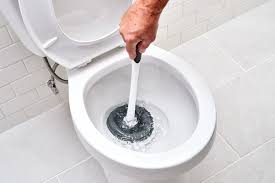Dealing with a clogged toilet can be a frustrating experience, but before you call a plumber, there are several DIY methods you can try to unclog your toilet. In this article, we’ll explore effective ways to tackle a toilet clog using household items and simple techniques.Why Does a Toilet Clog Happen?Toilet clogs typically occur due to excessive toilet paper, non-flushable items, or a buildup of waste. Understanding the cause can help you prevent future clogs. Here are some common reasons:
- Flushing too much toilet paper at once
- Flushing items like wipes, sanitary products, or toys
- Mineral buildup in the pipes
- Low-flow toilets with weak flushing power
Tools You’ll Need for DIY Toilet UncloggingBefore you start, gather these common household tools:
- Plunger (a flange plunger works best for toilets)
- Hot water
- Dish soap
- Baking soda and vinegar
- Wire hanger or drain snake (optional)
Method 1: The Plunger TechniqueThe plunger is the most effective tool for unclogging a toilet. Follow these steps:
- Place the plunger over the drain hole, ensuring a tight seal.
- Push down gently, then pull up sharply to create suction.
- Repeat this motion 10-15 times.
- Flush the toilet to check if the clog is cleared.
Method 2: Hot Water and Dish Soap
If you don’t have a plunger, this method can work:
- Squirt a generous amount of dish soap into the toilet bowl.
- Pour a gallon of hot (not boiling) water into the bowl from waist height.
- Wait 15-20 minutes for the soap to break down the clog.
- Flush to see if the water drains properly.
Method 3: Baking Soda and VinegarThis natural solution can help dissolve minor clogs:
- Pour one cup of baking soda into the toilet bowl.
- Add two cups of vinegar and let the mixture fizz for 30 minutes.
- Follow with hot water to flush out the clog.
Preventing Future Toilet ClogsTo avoid recurring clogs, follow these tips:
- Use less toilet paper per flush.
- Avoid flushing non-degradable items.
- Regularly clean your toilet with a mild cleaner.
- Consider upgrading to a high-efficiency toilet if clogs are frequent.
When to Call a ProfessionalIf none of these methods work, the clog might be deeper in the pipes. Signs you need a plumber include:
- Multiple fixtures in your home are draining slowly.
- You notice sewage backups or foul odors.
- The clog recurs frequently despite your efforts.
By following these DIY methods, you can save time and money while solving a common household problem. Remember, prevention is key to avoiding future toilet clogs!

